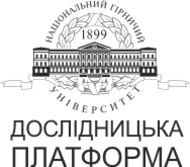№80-21
Assessment of electromagnetic compatibility indicators of industrial power supply systems with power system capacity limitations
Yu. Papaika1,2, O.Udovyk1
1 Dnipro University of Technology, Dnipro, Ukraine
2 Dnipropetrovsk Research Institute of Judicial Examination, Dnipro, Ukraine
Coll.res.pap.nat.min.univ. 2025, 80:213–222
Full text (PDF)
https://doi.org/10.33271/crpnmu/80.213
ABSTRACT
Purpose. To investigate the indicators of non-sinusoidality and voltage asymmetry in the shop power supply system of industrial enterprises under the condition of technological limitations of the power system capacity.
The methods. Modeling of non-sinusoidality indicators was performed using spectral analysis and Fourier transform methods. Asymmetrical modes were modeled assuming the use of voltage quality regulators (VQRs) using the provisions of the symmetrical components method. As an assumption level, it was assumed that electro-technological installations are equipped with power electronics devices for Smart-control of energy consumption modes.
Findings. The harmful effect of higher harmonics and negative sequence currents on the energy efficiency of industrial power supply systems was analyzed. It is proven that the reduction of short-circuit power at the distribution points of balance accessories significantly worsens the electromagnetic compatibility of shop distribution networks with nonlinear and asymmetrical loads. The use of three-phase electrotechnological installations as voltage quality indicator regulators is proposed.
The originality. The dependences of voltage asymmetry indicators on the parameters of the enterprise's power supply system have been established. This allows us to substantiate the concept of using active intelligent SNRs in island or abnormal operating modes of a centralized power system.
Practical implementation. Data for calculating the values of voltage asymmetry coefficients for various combinations of symmetrical and asymmetrical loads have been obtained. The models include the parameters of typical power transformers and the possibility of changing the short-circuit power in wide ranges. A similar method of normalizing voltage quality indicators is important for the operation of industrial power supply systems in autonomous modes with generation from renewable energy sources and/or generators.
Keywords: electromagnetic compatibility, higher harmonics, interharmonics, asymmetry, consumer-voltage quality regulator, short-circuit power.
References
1. Pivniak, H.H., Zhezhelenko, I.V., & Papaika, Yu.A. (2018). Enerhetychna efektyvnist system elektropostachannia. Nats. tekhn. un-t «Dniprovska politekhnika».
2. Pivnyak, G.G., Zhezhelenko, I.V., Papaika, Yu.A., & Lysenko, O.H. (2017). Interharmonics in power supply systems. Naukovyi Visnyk Natsionalnoho Hirnychoho Universytetu, (6), 109–114.
3. Pivnyak, G., Zhezhelenko, I., & Papaika, Yu. (2013). Normalization of voltage quality as the way to ensure energy saving in power supply systems. Energy Efficiency Improvement of Geotechnical Systems – Proceedings of the International Forum on Energy Efficiency, 11–18, https://doi.org/10.1201/b16355-3.
4. Shydlovskii, A.K., & Zharkin, A.F. (2005). Higher harmonics in low-voltage electrical networks. Naukova dumka.
5. Papaika, Yu.A., Lysenko, O.H., Koshelenko, Ye.V., & Olishevskyi, I.H. (2021). Mathematical modeling of power supply reliability at low voltage quality. Naukovyi Visnyk Natsionalnoho Hirnychoho Universytetu, (2), 97–103. https://doi.org/10.33271/nvngu/2021-2/097.
6. Zharkin, A.F., Palachov, S.O., Pazieiev, A.G., & Malakhatka, D.O. (2024). Assessment of the impact of bidirectional semiconductor converter on the quality indicators of electric supply in the Microgrid. Технічна електродинаміка, (4), 73–79. https://doi.org/10.15407/techned2024.04.073
7. Smolenski, R. (2017). Conducted electromagnetic interference (EMI) in Smart Grids. Springer.
8. Аbbаs, А. K., Hаmаd, S., & Hаmаd, N. А. (2021). Single line to ground fаult detection аnd locаtion in medium voltаge distribution system network bаsed on neurаl network, 23(2), 621–632. https://doi.org/10.11591/ijeecs.v23. i2.pp621-632.
9. Pivnyak, G., Azukovskiy, O., Papaika, Yu., Careres Cabana, E., Olczak, P., & Dyczko, A. (2021). Assessment of power supply energy efficiency by voltage quality criterion. Rynek Energii, 155(4), 75–84.
10. Pivnyak, G., Aziukovskyi, O., Papaika, Y., Edgar Caseres Cabana, Miedziński, B., Polnik, B., Jamróż, A., & Polyanska, A. (2024). Managing the power supply energy efficiency by means of higher harmonics. Polityka Energetyczna, 27(4), 59–80. https://doi.org/10.33223/epj/191813




